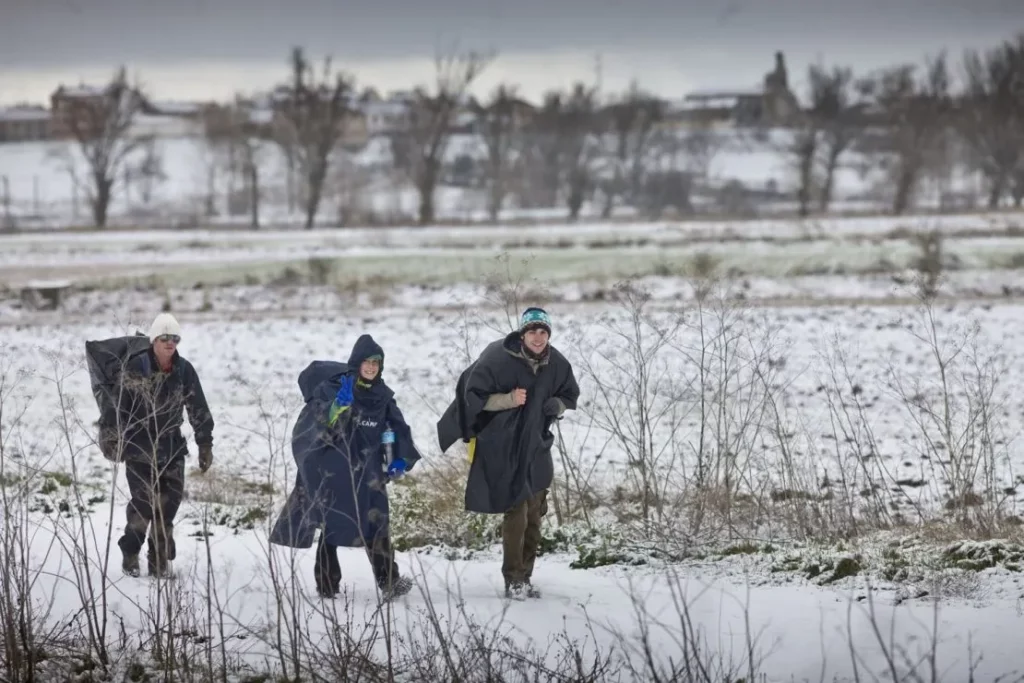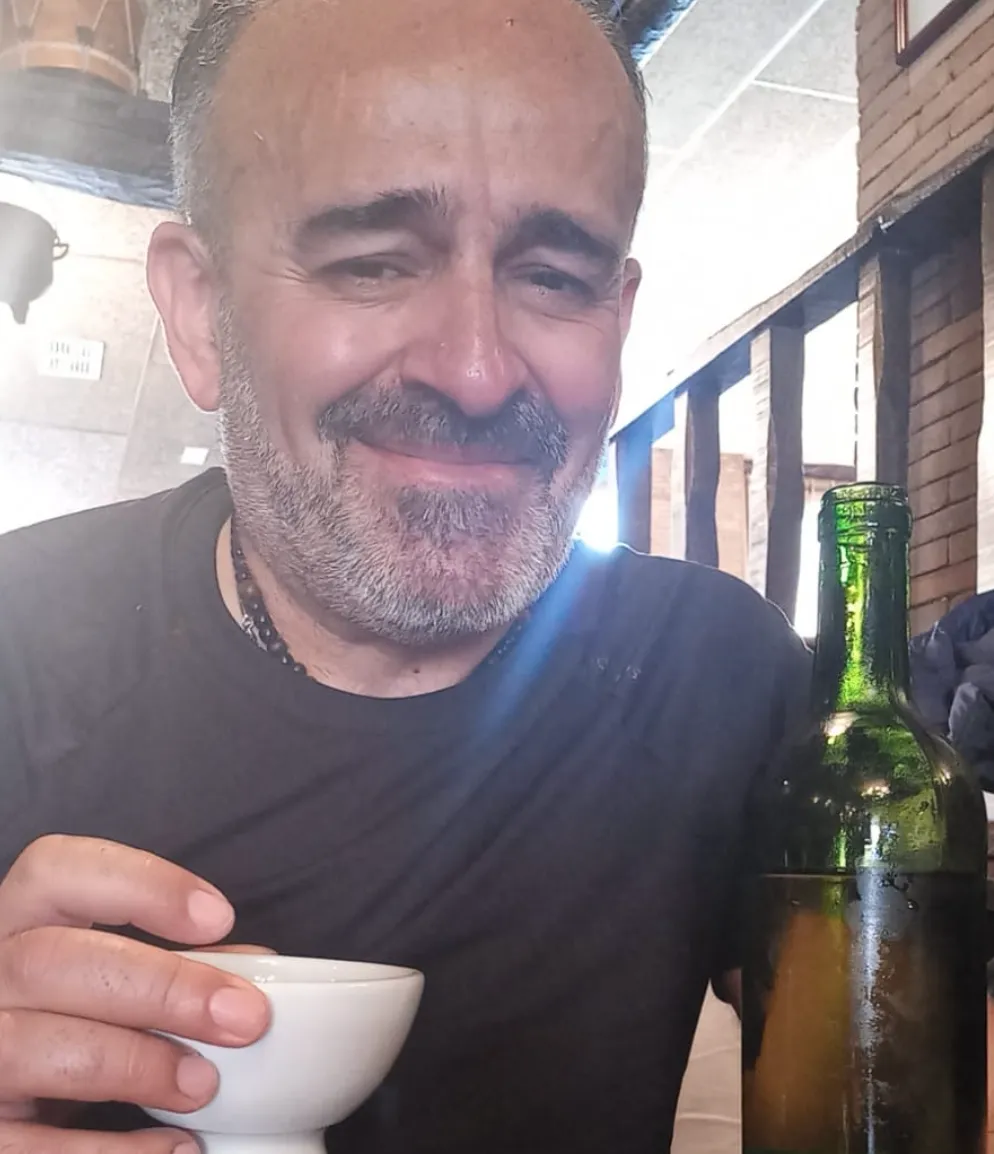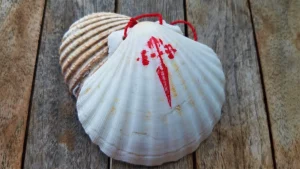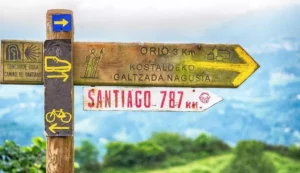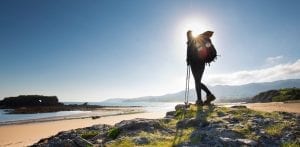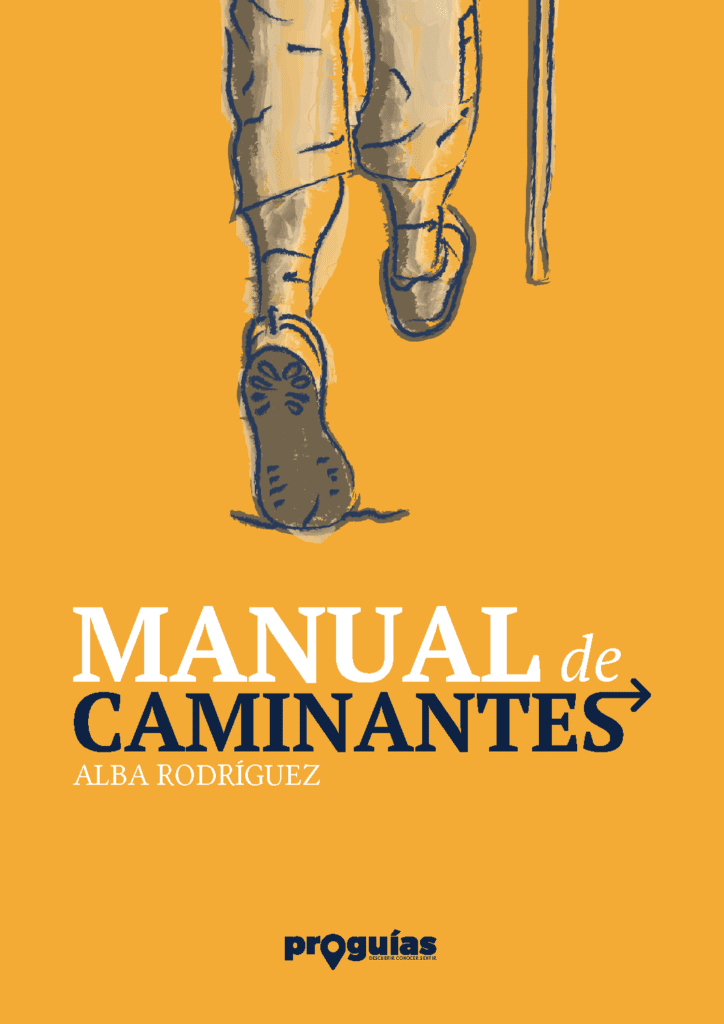It is about Fran Lucas Herrero, pilgrim, walker and author of the blog Experiences on the Caminowhich we already recommend to you. In this text he tells us his impressions about the winter on the Camino de Santiago.
The Way of St. James or winter walking routes
Surely many people have walked or hiked from Somport, descending through the Aragon Valley, which coincides with the first stage of the Aragonese Way of St. James that I have walked so many times. Surely the vast majority of those who do it is in summer, spring and even autumn, but what about in winter? Going out to do either the route I have described, from Somport to Jaca, Canfranc or Villanua, with the road, forests and snow-capped mountains, is a real luxury, as you are immediately transported to a magical place. And if the weather is fine, it is always a pleasure to walk on virgin or recently fallen snow, while contemplating the intense contrast between the azure blue of the sky and the luminous white of the snow around us.
Logically, my first recommendation would be that if it is the first time, either walking alone or on the Camino de Santiago with snow, winter hiking or adverse circumstances, that you wait a bit until the good weather arrives with spring and summer. But, of course, apart from missing out on that experience, I am nobody to advise when each person wants to invest his or her free time and steps. But, on the other hand, you have to know that doing the Camino or a hiking route in winter requires more preparation, experience and caution than at other times of the year, because you should never ever lose respect for nature, the weather and our environment, even if we try to do only simple routes and not alpine routes.
Walking, hiking in the mountains of Huesca, or walking the Camino de Santiago in winter is not dangerous. I myself, about a month ago and after the first snowfalls, walked the stage from Somport to Jaca, and a few days ago I returned from walking the Camino de Invierno, from Ponferrada to Santiago, at the beginning of January. Although I have not found snow as on other occasions, I have found a lot of water, mud and cold, but you can certainly see in the photographs attached to these lines that I have walked other times with snow. Clearly, with snow the pace slows down and we become more clumsy, for this reason we should plan shorter stages than at other times of the year.
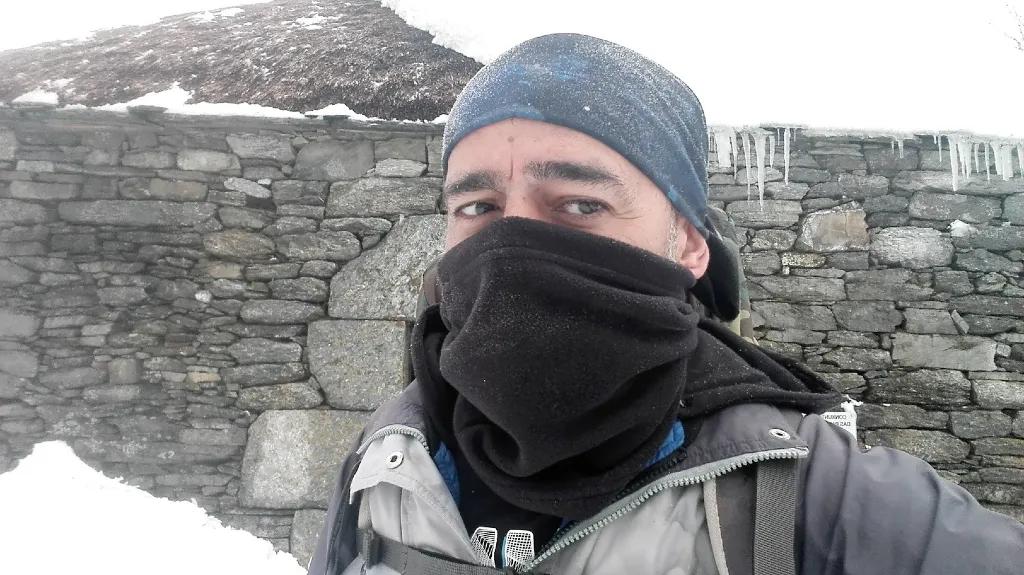
If you are looking to live the hiking or Jacobean experience as it was originally lived (which has little or nothing to do with the current crowds), looking for a spiritual balance or simply a different adventure, doing the Camino in winter can be a great idea. Of course, you should know that doing the Camino in winter is not easy but not as difficult as it may seem, but you have to be prepared to face bad weather, storms, wind and occasional snowfall or snow is already snowing. And if the weather gets worse, don't hesitate, seek shelter, take refuge, ask for help and wait for the weather to improve, be it minutes, hours or a day, to be able to continue on your way.
It is also essential to be well prepared with the right equipment and to know at all times what to expect at each stage. Always be very cautious. The first recommendation, apart from taking into account the weather, is that you should never go out alone, but rather with someone else, regardless of your level of experience. Always communicate what your route is going to be and be properly prepared for your purpose, and drink water to keep yourself hydrated even if you are not thirsty!
Very important and one of the biggest problems of exercising in cold temperatures is sweating. If you sweat and then get cold you have every chance of your body suffering from it. Hence the importance of layering and "regulating" your body temperature. Apart from breathable clothing, where the little secret to not getting cold or hot is to dress in layers, which means that enstead of wearing one very warm garment, it is better to wear two garments that are half as warm, which will allow you to "peel off layers". easily if you start to feel hot when walking, or vice versa. And of course shoes with good grip and goretex or other good quality anti-humidity system, carry a charged mobile phone, water, nuts, some energy bars or light food.

And of course, I'm talking about normal routes, snowy but affordable to do them with poles to secure your steps, sunglasses because the sun reflects a lot on the snow and can cause problems for your eyesight, but you can go without crampons, snowshoes, ice axes or similar equipment, as long as they are marked routes or stages of the Camino de Santiago, trails or paths for normal people, like me, not for mountain experts or technical routes for experts or professionals.
Anyway, my desire is only to inform you and never scare you, but if you go hiking in snow, or you are doing stages of the Camino de Santiago in winter, always use caution and common sense. Think, plan, plan ahead. Moving through the mountains in winter weather is slower, more uncomfortable, requires more effort, but the reward in the form of landscapes, experience, memories and fresh air is great. Enjoy and always have a good Camino!


